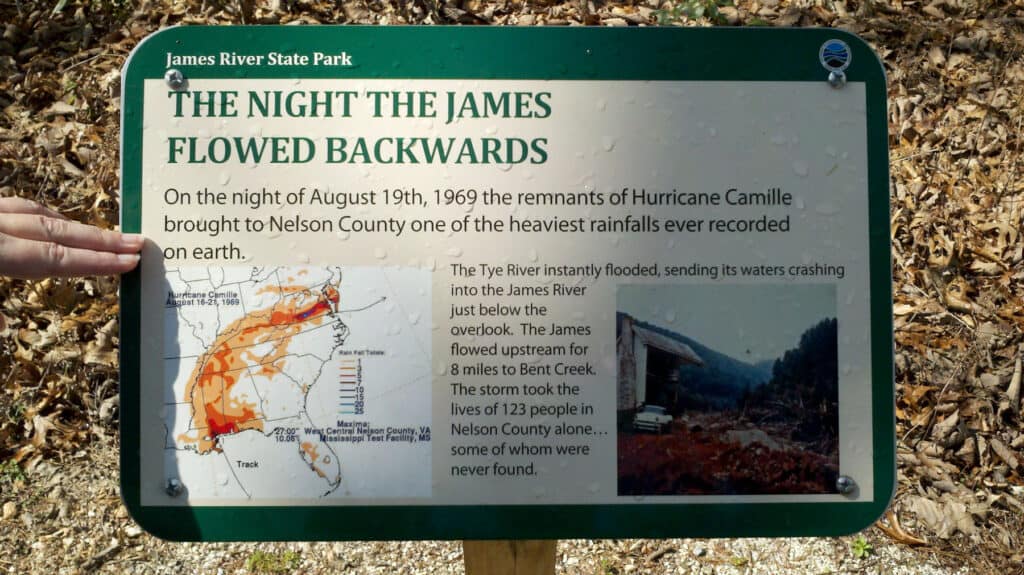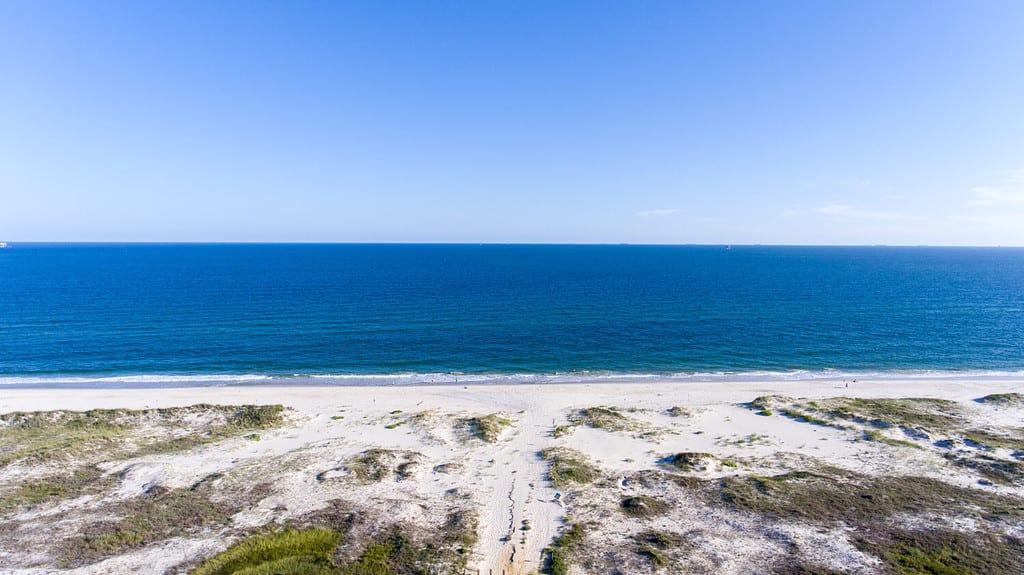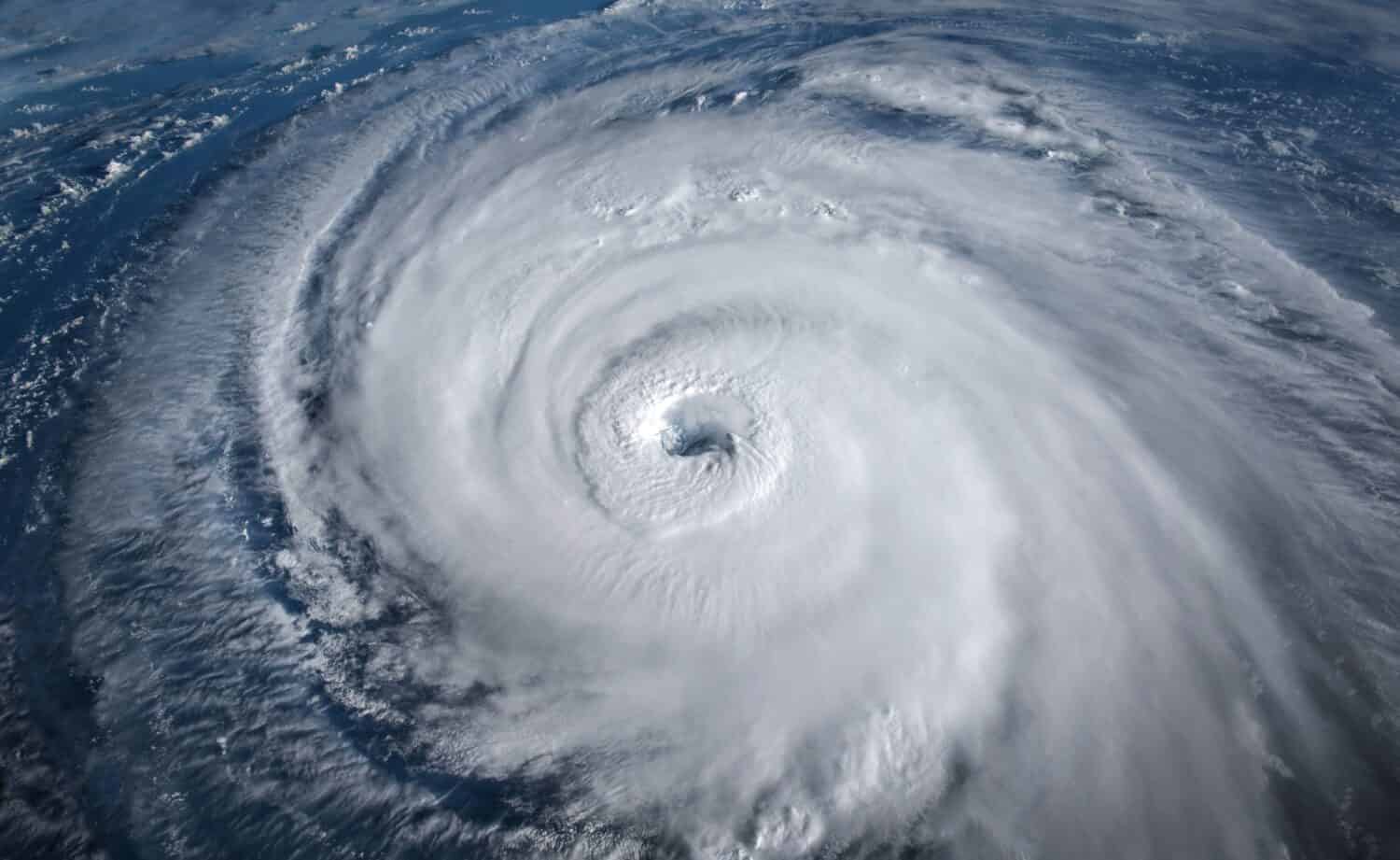Hurricanes are awe-inspiring displays of nature’s power – a reminder of how little humans actually control. These colossal storms batter the United States yearly and cause tons of damage. Lives are lost every year due to these massive storms, and they leave a clear mark on the landscape.
Many powerful hurricanes have hit Alabama over the years. Technically, Hurricane Frederic was the most powerful hurricane to make landfall in Alabama. However, Hurricane Camille was the most powerful hurricane to hit Alabama – even if it didn’t make landfall there. Many Alabama counties were affected by this hurricane, particularly those in the southeast.
We’ll delve into everything you need to know about this storm below. From information on how the hurricane formed, the damage it caused, and its effects on the local wildlife, it can’t get much more in-depth than the guide below.
Hurricane Camille: An Overview

Hurricane Camille affected many states, causing widespread destruction.
©Virginia State Parks staff / Creative Commons – Original / License
Alabama has had many hurricanes in its history, but Hurricane Camille was especially powerful and destructive. It happened a long time ago when weather forecasting was not as good as it is now.
The inaccurate predictions worsened the damage, leaving residents unprepared for the strength of Hurricane Camille.
Hurricane Camille made landfall on the night of August 17, 1969. It made landfall on the Mississippi Gulf Coast but affected areas far beyond that, including Alabama. The hurricane’s trajectory sent it northeast from its point of landfall. It gained momentum over the warm Gulf of Mexico, one reason it was so powerful.
Eventually, the hurricane became so strong that it was a Category 5. Storms with sustained winds exceeding 157 mph are the ones that fall under this classification. Camille’s winds exceeded this benchmark, reaching 190 mph – a record-breaking speed at the time.
The storm’s eye, a relatively calm center surrounded by a wall of ferocious winds, was exceptionally small, measuring only about 5 miles in diameter.
Upon making landfall, the storm brought heavy rainfall, which led to severe flooding, destroying numerous homes and businesses in low-lying areas.
The coast wasn’t the only area in trouble, though. The destruction reached inland, as well. Regions faced flash flooding, landslides, and other hazards. Widespread power outages, disrupted communication, and downed buildings were common across the path of this storm.
The Damage and Aftermath
The Hurricane dispersed eventually. However, there were tons of damage, and the aftermath stretched on for months.
The immediate impact of the storm was widespread destruction. The storm caused destruction, leveling coastal towns and causing significant devastation in even inland towns. Once the water receded, it became obvious that dangerous debris had been left behind and many homes had been destroyed.
The storm surge, a hallmark of powerful hurricanes, inundated coastal areas, leaving destruction in its wake. Beachfront properties were obliterated, and roads were rendered impassable by the surging waters.
Despite evacuation efforts, Hurricane Camille caused widespread loss of life. Over 250 people nationwide died due to the storm surge and the force of the hurricane’s winds, leaving little opportunity for escape once it landed.
Of course, the ecosystem was affected, too. Coastal wetlands, which play a crucial role in protecting against storm surges and providing a home to various species, were significantly affected by the storm’s assault. The beaches faced serious and instant erosion, which affected the lives of the animals that lived there.
The storm’s flooding affected inland habitats, too. Trees were knocked down, and many animals were displaced.
Reconstruction efforts took many years. Rebuilding whole towns isn’t easy, after all.
Impact on Alabama’s Ecosystem

Hurricanes can destroy beaches, making many animals homeless or without food.
©George Dodd III/Shutterstock.com
Sadly, we don’t know much about how this particular hurricane affected Alabama’s ecosystem. The storm did wreak havoc on the local plants and animals. However, hurricanes are a natural part of the world, and the animals in Alabama have been dealing with them for thousands of years.
Alabama’s coastal areas are teeming with life. The marshes and wetlands have tons of biodiversity – some animals and plants are rare and endangered. When storms hit these areas, they are often adversely affected. However, they often adapt better than humans, as many animals can pick up and move to a different area if the devastation is too bad.
The storm surge inundated coastal habitats, eroding shorelines and altering the landscape. Marshes, which act as buffers against storm surges and provide breeding grounds for various species, were submerged and damaged. The upheaval caused by the storm’s surge disrupted nesting and breeding cycles for birds and marine animals, potentially leading to population declines.
Of course, scientists did not look at the particular effects of this storm on wildlife. Scientific studies are particularly hard to do right after a hurricane, after all.
The storm’s destruction and powerful winds also carried pollutants and debris into the ecosystem. While hurricanes are natural, these debris are not. Oil, chemicals, and other pollutants entered the water and disrupted marine life.
The disruption caused by Hurricane Camille had an impact on wildlife that lasted beyond the immediate aftermath. The storm’s surge induced erosion, combined with subsequent storms and human activities, that continued to reshape coastal habitats, causing changes that influenced the distribution and behavior of wildlife. Some species thrived in the altered landscape, while others had trouble adapting to the new conditions.
What States Were Affected by Hurricane Camille?
Hurricane Camille primarily affected Mississippi, Louisiana, and Alabama. It significantly impacted the Gulf Coast far beyond its landfall area. It was very large with very little eye, which means larger areas were battered for longer.
These states experienced significant devastation, including intense winds, storm surges, and heavy rainfall. Coastal towns and low-lying areas were particularly affected.
However, transportation was affected a lot, and it took years to rebuild completely.
Mississippi and Louisiana experienced the brunt of Camille’s devastation, with widespread destruction of homes, infrastructure, and landscapes due to its powerful winds, heavy rainfall, and storm surge. The storm surge, in particular, led to significant coastal flooding and damage along the Gulf Coast. The hurricane’s impact was especially intense due to its rapid intensification into a Category 5 storm just before landfall.
Where Did Hurricane Camille Hit the Worst?
While Alabama did bear some of the brunt of the storm, it wasn’t the place that was most damaged by Hurricane Camille.
Hurricane Camille’s most devastating impact occurred along the Gulf Coast of Mississippi and Louisiana. The storm made its initial landfall on the Mississippi coast on the night of August 17, 1969. The area around Pass Christian, Mississippi, experienced the full force of the hurricane’s intense winds, torrential rains, and powerful storm surge.
The storm’s force devastated Pass Christian, virtually obliterating it. Some areas experienced a storm surge of over 24 feet, completely submerging the town and nearby communities. The surge washed away structures and destroyed nearly everything in the town.
In Louisiana, the region around the Gulf Coast also faced significant destruction due to Hurricane Camille’s impact. The hurricane made a second landfall along the Louisiana coast, causing further damage to coastal areas already battered by the storm’s effects.
This hurricane is considered one of the most devastating in the history of the United States, as over 200 people were killed. Of course, the storm’s effects were amplified by the less-developed technology of the time. Weather prediction was not as accurate as it is today, after all.
Thank you for reading! Have some feedback for us? Contact the AZ Animals editorial team.








